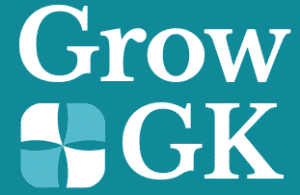Important MCQs from Class 9 Maths Chapter 1.2-Irrational Numbers
| In this article, you’ll find a set of important and exam-focused MCQs from Class 9 Maths Chapter 1.2-Irrational Numbers. These MCQs help you prepare smartly for your upcoming Maths tests. These MCQs are created based on the latest NCERT curriculum. These questions are perfect for students of CBSE, ICSE, IGCSE, NCERT, and various State Boards. See More Important MCQs from Class 9 Maths Chapter 1.1 “Number Systems” |
1. Which of the following numbers is irrational?
(A) \( \frac{7}{9}\)
(B)\( 0.123456789101112 \)
(C) \( \sqrt{49} \)
(D) \( 0.777… \)
Answer: (B) 0.123456789101112..View Answer......Hide Answer
Explanation: This decimal is non-terminating, non-repeating — hence irrational.
2. The sum of a rational number and an irrational number is always:
(A) Rational
(B) Irrational
(C) Integer
(D) Natural number
Answer: (B) Irrational Explanation: Rational + irrational = irrational (unless irrational part cancels, which is rare).View Answer......Hide Answer
3. Which of the following is rational?
(A) \( \frac{1}{\sqrt{2}} \)
(B) \( \sqrt{3}+\sqrt{2} \)
(C) \( \sqrt{2}\times\sqrt{8} \)
(D) \( \pi+2 \)
Answer: (C) \( \sqrt{2}\times\sqrt{8} \)View Answer......Hide Answer
Explanation: \( \sqrt{2}\times\sqrt{8} \)= \( \sqrt{16} \) = 4 , which is rational.
4. Which of the following is not true for irrational numbers?
(A) They are non-terminating and non-repeating
(B) They can be written as a ratio of two integers
(C) Their decimal expansion goes on forever without a pattern
(D) They cannot be expressed as \( \frac{p}{q} \), where p,q∈Z, q≠0
Answer: (B) They can be written as a ratio of two integersView Answer......Hide Answer
5. Which of the following is closest in value to an irrational number?
(A) \( \frac{22}{7} \)
(B) 3.14159
(C) π
(D) 3.14
Answer: (C) πView Answer......Hide Answer
Explanation: Only π is irrational. Others are approximations.
6. The decimal expansion of an irrational number like √5 is:
(A) Terminating
(B) Non-terminating recurring
(C) Non-terminating non-recurring
(D) Always an integer
Answer: (C) Non-terminating non-recurringView Answer......Hide Answer
Explanation: Irrational numbers, such as √5, have decimal expansions that are non-terminating and non-recurring, as they cannot be expressed as a fraction p/q.
7. If √3 is represented on the number line using a right triangle, what are the possible lengths of the legs of the triangle?
(A) 1 unit and 2 units
(B) 1 unit and √2 units
(C) 2 units and 2 units
(D) 1 unit and 3 units
Answer: (B) 1 unit and √2 unitsView Answer......Hide Answer
Explanation: To get √3, construct a triangle where the hypotenuse is √3. We first locate √2 (legs 1 and 1, hypotenuse √2). Then, use legs of 1 unit and √2 units: √(1² + (√2)²) = √(1 + 2) = √3.
8. To locate √10 on the number line, which of the following steps is most accurate?
(A) Mark a point at 10 units from the origin.
(B) Construct a right triangle with legs of 3 units and 1 unit, then measure the hypotenuse.
(C) Construct a right triangle with legs of 3 units and 1 unit, where √10 is the perpendicular.
(D) Use a line segment of 1 unit and extend it by √9 units.
Answer: (B) Construct a right triangle with legs of 3 units and 1 unit, then measure the hypotenuse.View Answer......Hide Answer
Explanation: For √10, construct a right triangle with legs AB = 3 units and BC = 1 unit. By the Pythagorean theorem, AC = √(3² + 1²) = √(9 + 1) = √10. This hypotenuse length represents √10 on the number line using NCERT’s geometric method.
9. Which of the following numbers cannot be represented precisely on the number line using a compass and ruler construction?
(A) √2
(B) √3
(C) π
(D) √5
Answer: (C) πView Answer......Hide Answer
Explanation: √2, √3, and √5 can be constructed using geometric methods. π, being a transcendental number, cannot be constructed precisely with a compass and ruler due to its non-algebraic nature.
10. If √7 is located on the number line, what is the approximate value of its position relative to integers?
(A) Between 1 and 2
(B) Between 2 and 3
(C) Between 3 and 4
(D) Between 4 and 5
Answer: (B) Between 2 and 3View Answer......Hide Answer
Explanation: Since 2² = 4 and 3² = 9, √7 ≈ 2.645 lies between 2 and 3. Geometric construction confirms this by building on √4 and extending appropriately.
